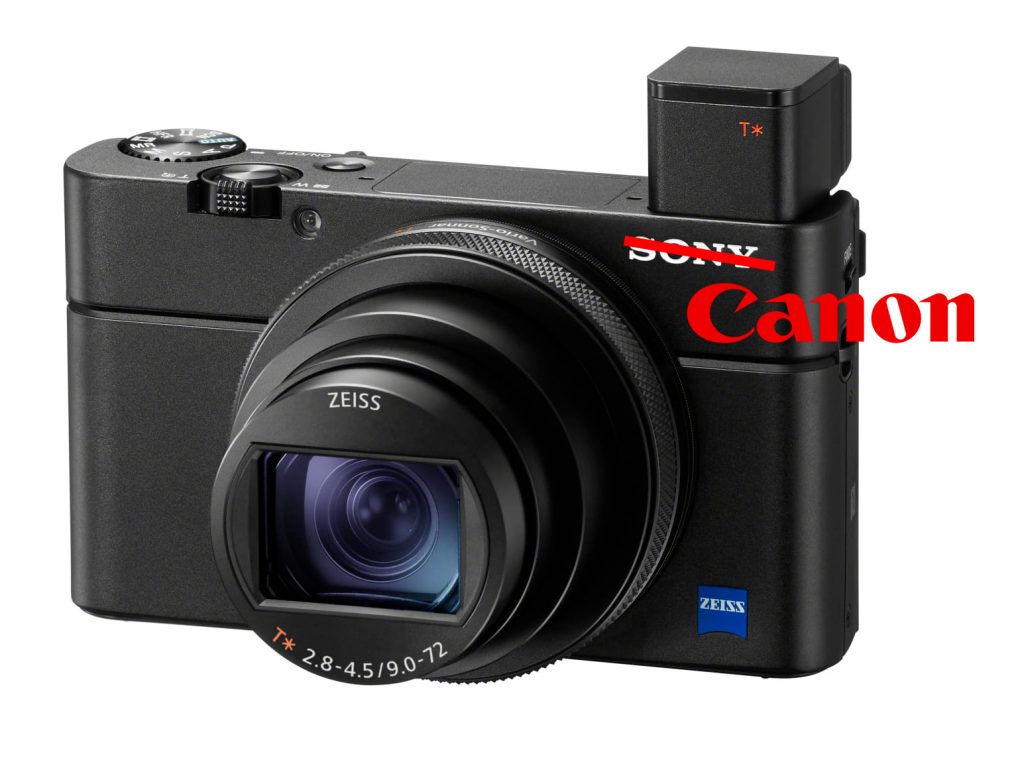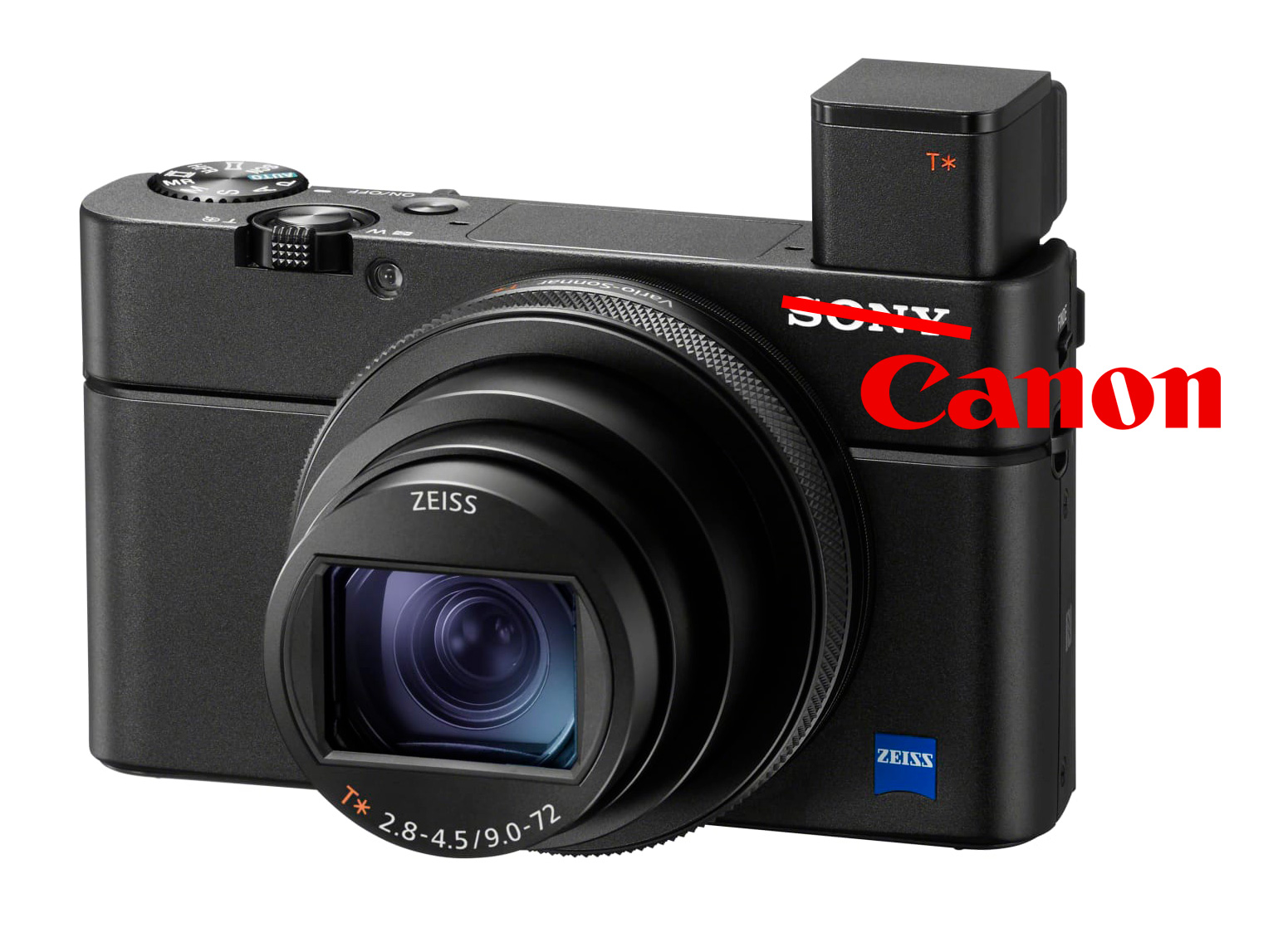
Stuck in an iterative rut with no experimentation on form or concept, with no imagination or new ideas, Sony is in danger of becoming merely a “specs” company, designing only by committee and median user feedback.
And so we come to Summer 2019.
So far, Sony’s greatest gift to the photography and filmmaking world has been sensors. Sony’s semiconductor expertise in this area has cornered the market, and I’d go as far as to suggest other competitors are just a little bit too reliant on Sony for manufacturing and sensor design.
But now, having built up the tech specs, something strange is occurring.
Sony seems to be trying to do a Canon on us.
Kaizen
Nothing sums up the Japanese philosophy of Kaizen more than the Sony RX100 series. It’s a philosophy of small changes adding up over time to produce big changes. In my opinion, it’s what holds the camera industry back.
Each expensive RX100 iteration has taken only baby steps forward as a concept.
Sony has all these brilliant engineers creating technological leaps for the RX100 series like stacked sensors, 24-200mm lenses for a compact 1″ sensor and very high frame rates.
Sony’s application of this technology in the market has been frankly about as unimaginative and boring as you can get.
On paper, there are revolutions – a stacked sensor, clean 240fps 1080p, fast on-chip AF, S-LOG, compact 24-200mm lens and pop-up EVF have been highlights of the RX100 series leading up to today’s announcement of the RX100 VII (M7).
But these are merely the result of faster chips. Bigger numbers. Newer manufacturing processes. For Sony, it seems this is all that cameras are about.
In a yearly-evolving 7-series long RX100 line-up, each model pushing new heights of silliness when it comes to the price, we are now at the level of $1200 for a compact camera and the basic concept hasn’t changed ONCE.
It’s a camera with serious issues.
Slow-mo is badly implemented with a dreadful UI.
Ergonomics are badly implemented.
There is a lack of choice. One body design across 7 models spanning 7 years.
The traditional pocket compact design shape, or traditional bridge camera shape hasn’t been deviated from.
They are fiddly to use.
There’s been unfit for purpose attempts at apps.
There’s been no innovation whatsoever when it comes to integration with online services, such as Instagram and YouTube.
Sony has done virtually nothing to encourage a third party ecosystem of accessories or software.
The RX100 is a 2002 compact point & shoot, with 2019 numbers on the box.
What a massive missed opportunity.
An A7 is an A7, is an A7
The years roll by but the lack of imagination at Sony remains constant.
A hybrid stills and filmmaking tool remains in the body of a traditional mirrorless stills camera, without that magic ND filter technology we know Sony is capable of on the FS5. There is no soul, no attempt to break the mould. The materials are uniformly black. The software is uniformly grey. The tactile experience of using one is a muddy brown.
There’s no flourish. No creativity in the finish. No creativity in materials science. There’s no wood, no carbon fibre, no personality, colour or design language. A modern Sony is as homogenised as a Toyota.
There is no single designer like Jonny Ive, no single person’s taste is evident in the form or the shooting concept. Nobody is looking at the ugly angles on the body of the A7 III and giving it any flourish. There’s no culture like there is in Italian design. No stylised curves or clean lines of any real intention.
It’s just a corporate homogenised box with some specs.
Numbers.
Semiconductors.
That’s it.
Canonitus
Asking $1200 or $2000 or $3500 again and again, year on year, for the same thing. It worked for Canon and now Sony seems sure that the same approach is for them.
This is being a market leader by numbers only.
It doesn’t move the photographic industry forward.
Once AI is sufficiently advanced on smartphones, the photographic industry might have no choice but to die.
Japan must listen, and they must change.
What I need is a revolution.
The whole concept has to move on.
I want modularity, where I can swap a grip for another. I want seamless connectivity with hardware add-on peripherals, without resorting to the 20th century method of putting steel bolts holes and cages. I want a 10bit codec as standard like I get from Panasonic and Fujifilm. I want XAVC-S to be deleted entirely from the planet along with the PRIVATE folder and all the ridiculous subfolders in it. I also want to delete the Sony menus system from the face of the earth. I want a much larger screen to dominate the design and thinking of the camera from day zero. The physical controls have to be paired back to a minimalist Leica-like design. Who wants to access onscreen menus with a D-PAD in 2019, like something from a 1980’s Nintendo Game & Watch?
I need completely new colour profiles and not two separate sets. No “Creative Styles” and video Picture Profiles. I don’t want “Deep”, or “Sunset”, terms that have nothing to do with film or even reality. What speaks cinema to you? “Sunset” or “KODAK Vision3?” I don’t want to shoot S-LOG 3 in 8bit. I don’t want an HDMI port. That belongs on a TV. I want to be able to focus perfectly from the camera as one single integrated unit, and I don’t want anything smeared over the image like peaking either. I want a sharpened image in the viewfinder so I can see clearly what’s in focus without some crap crawling rampant over my frame. I want the ability to turn off noise reduction and sharpening entirely for the actual recording but have a clean and sharp live-view display and EVF. I need instant one-button toggle over the entire AF system with user preset modes and smart modes of operation that make use of A.I. Just the ability to track objects and make use of Eye AF without having to fuss around with a Q-menu would be an attractive leap in the concept of what a modern digital camera is. When it comes to RAW video internally, I don’t just want it, I need it. Stills photographers don’t do without it. Why should we?
Sony can Kaizen around all they like and refine the surface of a button until it works properly after 7 years and $10,000 gone out of the pockets of every poor long suffering early-adopter. Without new ideas and concepts, all that Kaizen amounts to is a rearranging the deckchairs on the titanic.





